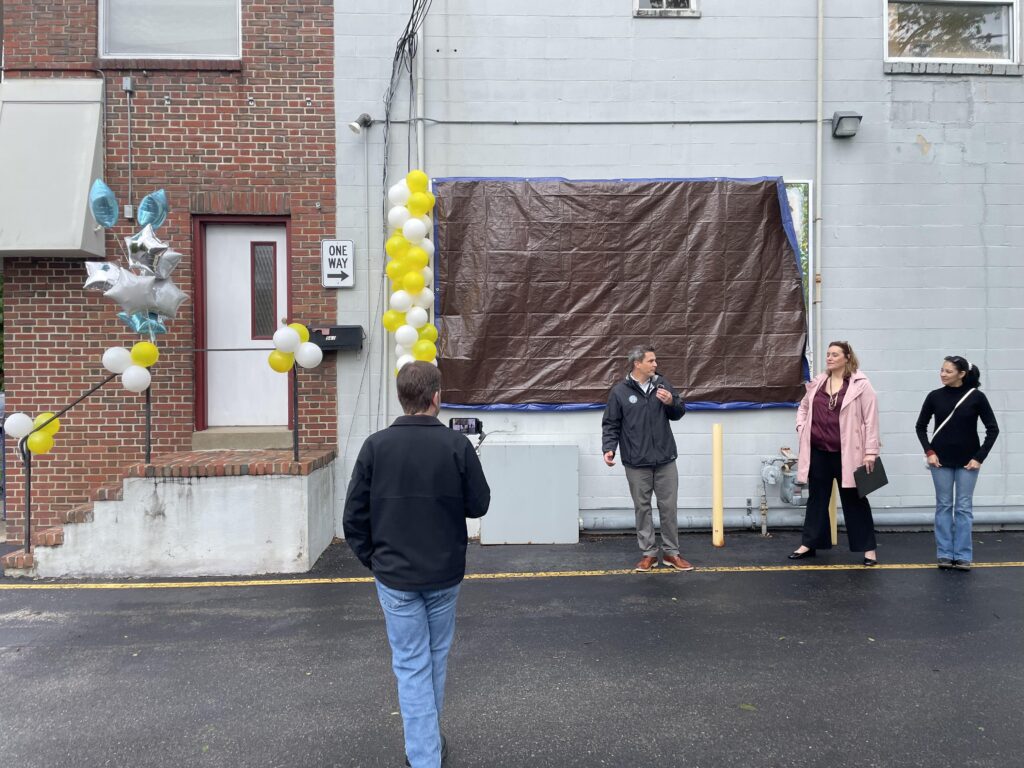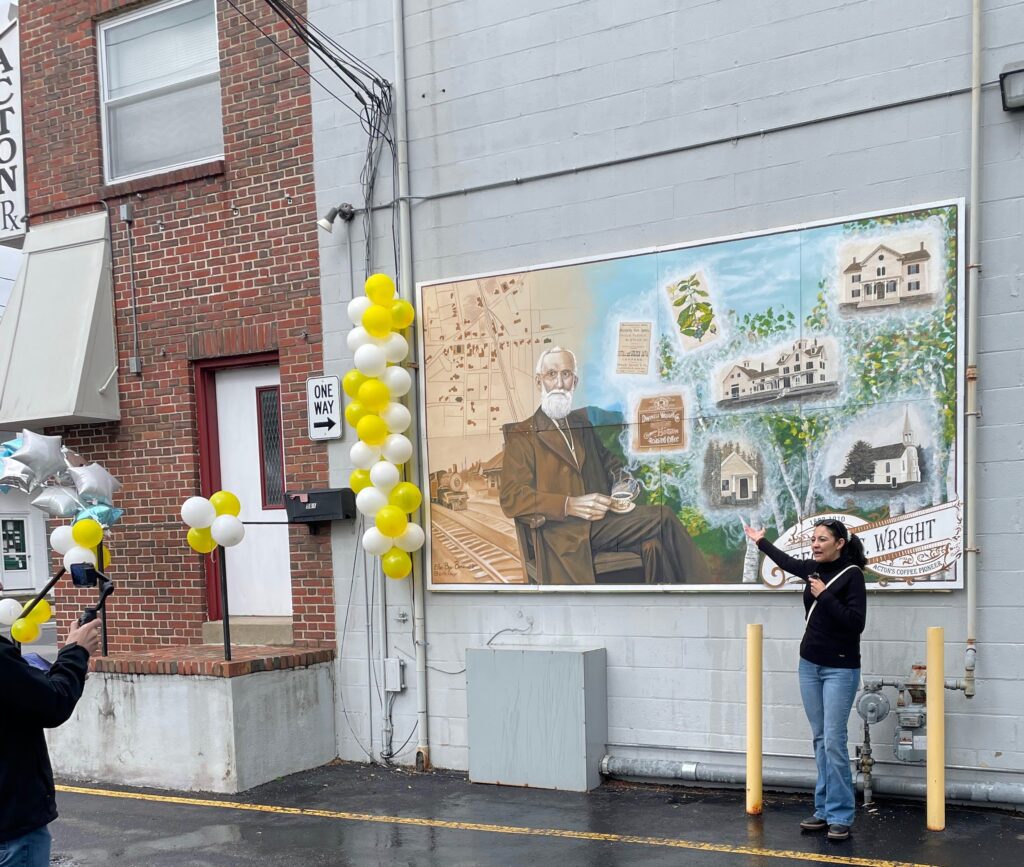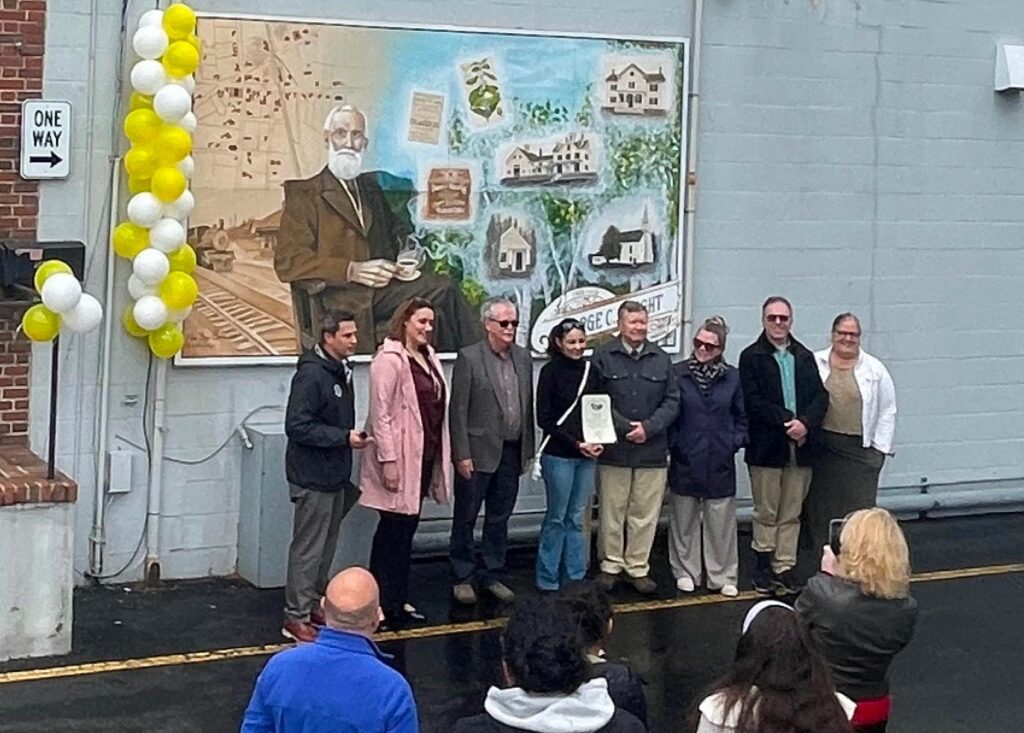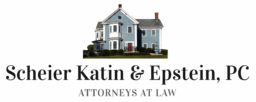The clouds were just beginning to part after Thursday’s Nor’easter, as a few dozen Actonions gathered on the still-damp pavement in West Acton Village on Friday morning to witness the unveiling of a new public art installation. “Public art helps create a community identity,” Town Manager John Mangiaratti announced to the assembled crowd, “and it celebrates the identity the community already has.” Minutes later, the brown tarp was pulled down to reveal a large mural, featuring 19th century Acton businessman George Wright.

The mural was commissioned by the Acton office of the Economic Development Director, explained Patricia Costa, and funded by the New England Foundation for the Arts (NEFA). Artist and Acton resident Elizabeth Bejar-Benz completed the painting nearly three years ago. It took extensive collaboration between the Economic Development Office and the Historical Commission to approve the display of the mural in West Acton Village, and the exact location wasn’t finalized until recently. It fits perfectly between two pipes on the east side of the West Acton Pharmacy, where passengers on the commuter rail may catch a glimpse of it, if they look quickly. Saad Dinno, pharmacist and owner of West Acton Pharmacy, learned about the opportunity to host the mural during a business luncheon at Town Hall. Dinno shared that he likes that the mural reflects on the history of West Acton and sees its display as a way to give back to the community.

After the mural was revealed, Bejar-Benz spoke to the group, sharing some of what she learned about Mr. Wright during her research. After trying his hand as a milkman, a carpenter, and salesman? in the shoe business, Wright was eventually convinced (by a member of the Hayward family) to start a coffee roasting business out of Boston. After the launch of this successful business, Mr. Wright would ride the train daily to Boston from the former West Acton stop. In the mural, Wright, rendered in sepia tones, holds a cup of coffee that steams to form a mist around color depictions of many of the buildings that he frequented, most of which are still standing in town today, although under different uses. The center building is Wright’s home at 615 Mass Ave, the bottom right shows the Universalist Church (now Theatre III), and the bottom left shows a building Wright used as an office, which is now in the Mt. Hope Cemetery. The final building in the top right is the old schoolhouse. “Mr. Wright was always involved in education,” explained Bejar-Benz, “and his mother was a teacher in Boxborough.” Bejar-Benz, herself, just completed her degree in art education.

While appreciating the details of the painting, attendees drank thematically appropriate coffee and snacked on fruit and sweets. Representative Dan Sena presented a certificate to Bejar-Benz in appreciation of the artwork.
What was the public response? “I love that it is here in West Acton, between our modern local coffee shop and Wright Hill Terrace and Wright Hill Conservation Area [both named for mural subject George Wright]” said Select Board Member Alissa Nicol. “Lovely,” said Miriam Lezak, “there’s no such thing as too much public art!”
Sarah Shamel is a nine-year resident of Acton, a coach, and a mother of three. On spring mornings, she can often be found jogging through the aforementioned Wright Hill Conservation Area, or walking down Wright Terrace on her way to buy a latte from West Acton Coffee.













